Trollheart's Handy Guide to Twentieth Century Music Technology
Since I'm a bit older (shaddup! No snickering!) than many of those who may be reading my posts, there are terms that I use which the younger generation may not recognise, as music was so much different back in my day. So, to clear things up and to avoid blanks looks I present here my alphabetised guide to the terms used back when I were a lad. No longer will you scratch your head when your uncle talks of turntables, or shrug when confronted with the term “C90”. Now you, too, can understand how things were, back before there was itunes, ipods, or anything else beginning with a lowercase I, and no internet! So come with me on a journey back to the past, to the heyday of vinyl, and the wonderful world of cassette tapes and record players.
Welcome to my world!
A
ALBUM:- More or less the same as today, an album was a record containing a certain amount of tracks (usually no more than 10 oe 12 altogether), with a hardcover sleeve, often gatefold, inside which resided the record, or album. Also see
LP.
AMPLIFIER, or AMP:- An essential part of any audiophile's kit back in the seventies and eighties, the amp connected to the loudspeakers on your stereo, allowing the music played by the other parts of the system to be heard. If you had no amp, the only way to hear your music was through headphones (and I'm not talking earbuds here: we used to have to use big, heavy, ear-covering helmets back in my day, and sometimes they would have adjustable volume knobs on the actual headphones), assuming you had a “proper” stereo system, also called a “Separates” system. If you had a cheap all-in-one or MIDI system, the amp, such as it was, was built-in, but was vastly inferior.
ARM:- Part of the apparatus used to play the records on a record-player. The arm was mounted on a mechanical swivel, and when not in use clipped to the side of the record deck. When needed, it could be swung out over the record by simply lifting it gently and placing the stylus on the first track of the record. Almost always, when the record was finished, the arm would automatically return to its resting place, though on some albums it had been known to stick in the grooves at the end, and have to be lifted back manually. The arm was always placed down gently as the stylus could easily break if handled too roughly, also your record could suffer damage if proper care was not taken.
AUTOLEVEL:- When recording tracks, or a full album, onto cassette tape, it was usually preferable to set the recording level so that you got the best result. On some cheaper decks, however, the level was set to AUTO, and you were stuck with what you got. Then, as now, you got what you paid for, and if you were serious about your recording, you paid for a deck with adjustable recording level.
AUTO-REVERSE:- When this came out it was state of the art. While listening to your cassette tapes on your flashy new Walkman, you need not worry about turning the tape over when it got to the end of side one, as the system automatically snapped it over and began playing the second side. In reality, it did not physically turn the tape, which would have been impossible, but the motors engaged reverse heads on the deck which played the reverse of the tape. For those whose Walkmans did not have Auto-reverse, you had to either let the tape snap off on side one, or run it on to the end if the album did not fill the tape, open the cassette door, physically remove the tape and turn it over, close the door and press PLAY to hear the second side. What a palaver, eh?
B
BLANK TAPE:- In my time, for most of my youth, you had three ways of getting an album. You could buy it, hope to tape tracks off the radio if you were desperate, or, the favourite, borrow a mate's copy, tape it onto cassette tape and return the album to him or her. To do this, you needed to buy a blank tape, which was like a DVD-RW these days: you could record on it again and again, but after a while the strain of multiple recordings would begin to show and the quality of your music would deteriorate (see
DROPOUTS). The good thing about blank tapes was that you could record a bit, take it out and play it on a Walkman or handheld tape deck, then later record more, and so on. Unlike DVDs, tapes did not have to be “finalised” before they could be used. You could also tape over previous recordings with initially no discernable loss of quality. Blank tapes in general were cheap, and we bought them in packs of five or ten at a time.
BLOWING DUST:- Not as you might think a euphemism: we actually had to do this. If a record had not been properly cleaned before playing --- with either a special antistatic cloth or, more usually in my case, the sleeve of my jumper! --- it could collect dust which would then transfer onto the stylus of the cartridge on the playing arm. So, as a precaution, every time we went to play a record we would gently lift the arm and blow on the stylus, thus removing any dust that might have adhered to the needle, and hopefully assuring a “clean” play. On rare occasions, particularly when there was more stubborn dust there that refused to be blown off, we would gently --- very gently! --- tap the stylus with the finger, though this was usually with a great deal of trepidation and only attempted if absolutely necessary, as styli were notoriously delicate, and could be expensive to replace.
C
C60/C90/C120:- Every blank cassette you bought had a specific recording time. Unlike DVDs today, one size did NOT fit all. The “C” obviously referred to the cassette, while the numbers were the amount of minutes of recording time available. So a C90 would have 90 minutes recording time, a C60 would have sixty, and so on. I think the longest recording time was 120 minutes, though my memory is not what it was... Recording time was split evenly per side, of course, so on the first, or “A” side of say a C90 you could record up to 45 minutes, and the same on the reverse. There was no sophisticated warning if you overran the tape: it simply shut off, and if you were in the middle of a song, tough. You'd have to get another tape, erase some other stuff off the tape or try “fading” the last track.
CARTRIDGE:- Another part of the arm, the cartridge was perhaps the most important as it held the stylus, or needle, in place. When you had to replace the needle you could do so, or if you had enough money you could replace the whole cartridge, which then came with a stylus attached. Although more expensive this way, it was often favoured as the art of replacing a stylus on its own was very tricky, and you needed watchmaker's hands to perform the operation: a stylus was about as long as a fingernail, and very thin and delicate.
 CASSETTE:-
CASSETTE:- Usually called “tapes”, cassettes were a small box-shaped flat case in which resided two plastic spools. Strung between these spools was a coil of magnetic tape, and when loaded into a cassette recorder or player the spools would be turned clockwise, winding on the tape and either playing what was on the ribbon or recording onto it. Cassettes had a nasty habit of getting jammed or twisted around the spools of the player or recorder, which usually meant they were ruined: you could, with some patience, expertise and a lot of luck, extract the tangled tape from your recorder, but in most cases it was then useless, though the VERY lucky or industrious have been known to have been able to rewind the tape, by hand using a pencil or other narrow stick-like object inserted in one reel and turned, back to the beginning and thereby save the recording. Such instances were few and far between though: a tangled tape was usually destroyed. Even if you managed to save it, chances were that little warps would appear on the tape and cause fluctuations in the music (see, again,
DROPOUTS), or more often, the next time you used the tape it would either tangle again or even break completely.
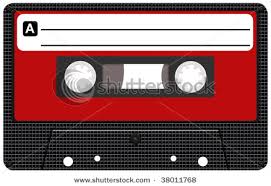
Cassettes, though fragile and prone to failure, were for my generation the only way to get your music mobile. You would record your favourite albums, compilations, whatever onto the tape and take it with you to listen on the go. Your records could only be listened to at home. Cassettes were also great for making compilations, hence the origin of the word “mixtape”.
COWBOY HATS:- A euphemism this time, used to describe the annoying and unwanted effect of records warping. If records were stored incorrectly --- near heat, a strong magnetic source etc --- the vinyl of which they were constructed could bend and warp, so that when you put the record on the turntable it would undulate as it went around, looking like waves on the sea, or indeed, a cowboy hat. This phenomenon was also referred to as “waving goodbye”, as it normally meant the sad end of your album: there was no way to fix this. That notwithstanding, on a decent stereo it was possible to play a “Cowboy Hat”, but most people didn't risk it as the constant up-and-down motion could play havoc with your stylus, leading to breakage or replacement before time.
CRACK, POP, HISS:- No, not a breakfast cereal! Records were so intrinsically delicate that not cleaning one properly, or allowing it to become worn, or indeed playing it to death, could result in the needle catching imperfections in the vinyl, which would be relayed back to the listener as the above-named sounds. Sometimes this could be caused just by dust on either the record or the stylus, so stopping it and cleaning either could sort the problem, and there were procedures that could eliminate, partially or completely, this annoyance, though they did not always work. See
SCRATCH, WEIGHTED ARM.
D
DIAMOND STYLUS:- The best, longest-lasting and of course most expensive stylus you could buy. The upside was that the abovementioned rarely if ever happened if you used a diamond stylus, and you seldom had to replace them.
DISCMAN:- An early stopgap between the Walkman and other hand-held tape recorders and the as-yet-decades-off ipod and other MP3 players, the Discman was essentially a small, portable CD player. It failed pretty miserably though, as the very smallest it could go was the size of a CD, and that's still pretty big, in terms of portability: much bigger than the Walkman. And CDs do not take well to being bounced around, so tended to skip and jump a lot. Not to mention that if you were going on a decent trip, you needed a good handful of CDs to get you by, and CD-Rs had not even been invented yet, so you only had a choice of albums!
 DROPOUTS:-
DROPOUTS:- After recording onto cassette tape, if you had a) left the tape near a strong magnetic field, eg TV or loudspeakers, b) recorded on the tape many times previously or c) just got a bad batch, your recordings could suffer from intermittent moments where the music would either become muffled, or stop altogether, usually for about half a second. Such instances were called dropouts, as they resulted in the music, well, dropping out of the recording. A tape with dropouts was unrecoverable, and the more you played it the likelihood was the more dropouts would show up, sometimes to the point of completely erasing, over time, the recording.
DUST-COVER:- Unless you bought it second-hand (and often, even then) every album sold came with a plastic sheet that covered the cardboard sleeve. As the name suggests, this was to protect the sleeve, but more importantly the album itself, from dust. Typically, a sleeve would have the opening to the right, where the record would be slotted in, and the dust-cover would fit on in such a way that the opening would be at the top, thereby effectively sealing in the record. Of course, in practice it was never air- or dust-tight, but for our purposes it did the job. Whenever you played an album, you always made sure to replace the dust-cover. Some record shops actually sold dust-covers individually or in packs, for those worried record-owners who had either lost their original, or had bought a second-hand album that had come without one.
DUBBING:- Back in my day, this had nothing to do with hip-hop, rappers or DeeJays. Dubbing was simply the term given to the process of recording from one cassette onto another, via a double or twin cassette deck.
E
EP:- Short for Extended Play, this usually referred to a short, four to six-track single released by a band in advance of their new album. It would usually contain the first single from the album, with other tracks yet to be released. It was, in effect, a “taster” for the album, though in some cases it BECAME the album, as the EP was never taken any further.
F
FADING:- This was a process whereby, as described in the section on
CASSETTES above, you could, if you had a deck with controllable recording levels, gradually reduce the volume at the end of a track, either so as to make it fit on a tape that was almost out of space, or to fade out applause on a live track, or even fade down one track which automatically segued into another, which you would not be able to separate one from the other any other way.
G
GATEFOLD SLEEVE:- Usually, but not always, on a double or live album, the gatefold sleeve would fold out, unlike other sleeves which would be one piece of cardboard, and often would have an extended picture running across both sides, half of which could only be seen when the sleeve was folded in. On a double album, there would usually be slots at both left and right of the unfolded sleeve, in which each of the records would reside. Gatefold sleeves were usually lavishly decorated and had things like lyrics or liner notes, or sometimes photographs inside.
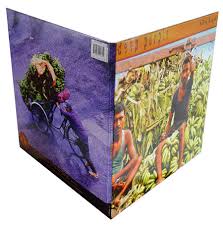 GROOVES:-
GROOVES:- Tracks cut into the vinyl of a record, each one represented a song on the album. The needle would travel across these grooves as the record spun on the turntable. They were quite handy because you could identify each song by the groove, and so if you wanted to play say the third track in, but didn't want to hear the first or second, you could carefully place the needle down on the third groove. Hey, it was the best we had at the time, ok?
H
“HOME TAPING IS KILLING MUSIC --- AND IT'S ILLEGAL!” :- Believe it or not, they actually printed this on the back and inner sleeves of many albums, trying to dissuade people from copying records onto tape. Hah! Bet they wish that's all they had to worry about now! But back then, it was actually considered illegal to copy an album you didn't own onto a blank tape. Quite how they worked out who taped their OWN albums, for mobile listening, and who copied their mates' albums, is beyond me. Anyway, like everything else the record companies tried, this failed. It was completely ignored in the same way those FBI warnings on DVDs are laughed at. Pathetic really: the idea that having taped an album you would not at some point want to own the original. Back then, the quality of tape recordings was nothing like the digital descendants of today, and anyway, we usually wanted the cool sleeves, lyrics, liner notes, and more importantly, we wanted the album (if it was any good) in our collection. Tapes just didn't cut it, and as mentioned earlier, were quite prone to failure.
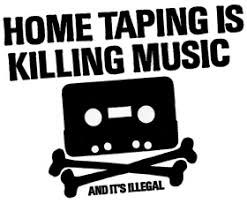 I
INLAY:-
I
INLAY:- The insert on a pre-recorded cassette tape of an album, essentially the sleeve, with the artwork and sometimes lyrics etc on it. Inlay cards were also used on blank tapes, where they could be reversed, written on and stuck back in so that you could see what was on the tape.
INNER SLEEVE:- A simple but effective protection for an album, the inner sleeve was usually a blank paper envelope in which the album resided. It sometimes had a circle cut in the middle, through which you could see the record label, and was open only at the top. As the actual album sleeve loaded the record via the right-hand side slot, this effectively produced a pretty clever and safe way of ensuring that a) the album did not fall out and b) it was protected from dust. Some inner sleeves had artwork on them, some lyrics, particularly lavish gatefold ones, but the larger percentage were plain white. Many people (myself included) often hand-decorated their favourites. The inner sleeve was also a handy device to get the record out of the sleeve without having to put your mucky fingers all over it, as explained in
PLAYING PROCEDURE, further on.
L
LEADER TAPE:- The first few seconds of a blank magnetic tape were unrecordable, so if you started your taping from the very beginning of the cassette, you would miss the first few seconds of the music. We usually got around this by winding on, with a finger or a pencil in the spindle, past the leader tape, as it was called, to the first recordable part of the cassette. The leader was usually a different colour to the rest of the tape, but even if it wasn't, a turn or two was usually enough to get past it.
LP:- Short for Long Player, another word we used for an album. Kind of self-explanatory, but used quite a lot back in my day.
M
MEGAMIX:- A phrase coined in the eighties for a compilation of tracks, usually but not always of the disco variety, mixed together in such a way that they segued, though often there was a certain amount of cheating involved, as instead of actually matching the BPM (Beats Per Minute) as professional Djs did (and I think still do?) they would overlay the track with clapping, which confused the listener as the track faded from one to the other, and it was hard to hear if they were actually seguing together properly. To my knowledge, the first commercial, or at least charting, megamix was called “Stars on 45”. Then everyone was at it!
METAL TAPE:- The very best cassette tape money could buy, about four times as expensive per tape as normal cassettes, but reputedly of almost never-failing quality. If you had an album that you had borrowed and wanted to keep forever, you shelled out on a Metal Tape to record it on. The Rolls-Royce of tapes, indeed.
(
Here we again run into the problem of having a character limit per post, and so I have to split this guide up into two parts. Apologies. )


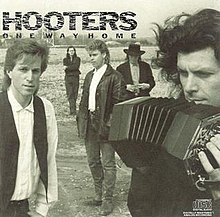

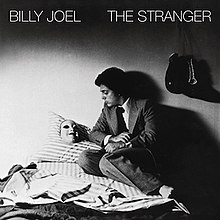








 Linear Mode
Linear Mode
